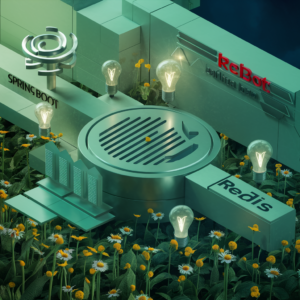Java, a widely-used and versatile programming language, is celebrated for its platform independence and automatic memory management. Memory management in Java is primarily handled by a process called garbage collection. In this article, we’ll delve into the world of Java’s memory management and explore how garbage collection works.
The Basics of Memory Management in Java
Java abstracts many low-level details of memory management, making it a developer-friendly language. Instead of manually allocating and deallocating memory, Java provides an automatic memory management system that handles the allocation and reclamation of memory. This system revolves around the concept of garbage collection.
Memory Areas in Java
Java’s memory is divided into several areas, with the two main areas being:
- Heap: The heap is where objects are allocated and deallocated. When you create a new object in Java, it’s allocated memory in the heap.
- Stack: The stack is responsible for managing method calls and local variables. Each method call creates a new stack frame that contains its local variables and references to objects in the heap.
The Need for Garbage Collection
As Java programs run, they create and discard objects. If developers were responsible for manually freeing memory, it could lead to memory leaks and resource wastage. Garbage collection ensures that memory is efficiently used and that objects that are no longer in use are automatically deallocated.
How Garbage Collection Works
Java’s garbage collection mechanism is based on a simple idea: objects that are no longer reachable should be removed. The process can be broken down into the following steps:
- Mark: In this phase, the garbage collector identifies all objects that are still in use and marks them as reachable.
- Sweep: In the sweep phase, the collector goes through the memory and removes any objects that were not marked as reachable. These unreferenced objects are effectively deleted.
- Compact (optional): Some garbage collectors include a compaction step. During compaction, the remaining objects are shifted in memory to fill gaps created by the removal of objects.
Types of Garbage Collectors
Java offers different garbage collection algorithms that can be chosen based on the specific needs of an application:
- Serial Garbage Collector: This collector is suitable for single-threaded applications. It uses a stop-the-world approach, meaning it freezes the application during garbage collection.
- Parallel Garbage Collector: Also known as the throughput collector, this collector is designed for applications with high throughput requirements. It uses multiple threads for garbage collection, reducing pause times.
- Concurrent Mark-Sweep (CMS) Collector: CMS is designed for applications where low pause times are critical. It minimizes stop-the-world pauses by performing most of its work concurrently with the application threads.
- G1 Garbage Collector: The G1 collector is designed for applications with large heaps. It divides the heap into regions and performs garbage collection incrementally, minimizing pause times.
- Z Garbage Collector: Introduced in Java 11, the Z Garbage Collector is designed for low-latency applications. It uses a concurrent compacting algorithm to minimize pause times.
Garbage Collection Best Practices
While Java’s automatic memory management is a powerful feature, developers should still be mindful of a few best practices:
- Avoid Object Retention: Ensure that you don’t hold references to objects longer than necessary. This can be a common source of memory leaks.
- Monitor Garbage Collection: Use monitoring tools to keep an eye on garbage collection performance. Frequent or long garbage collection pauses can indicate issues in your application.
- Tune the Garbage Collector: Depending on your application’s requirements, you might need to configure and tune the garbage collector to meet performance goals.
- Use Object Pools (sparingly): Object pools can reduce the overhead of object creation and garbage collection, but they should be used with caution. They can make the code more complex and may not always lead to performance improvements.
Conclusion
Garbage collection is a fundamental component of Java’s automatic memory management system. It takes the burden of manual memory allocation and deallocation off the developer’s shoulders, making Java a robust and safe language. Understanding how garbage collection works and following best practices is essential for writing efficient and reliable Java applications. When used effectively, Java’s memory management system ensures that your applications run smoothly without memory leaks or excessive resource consumption.





